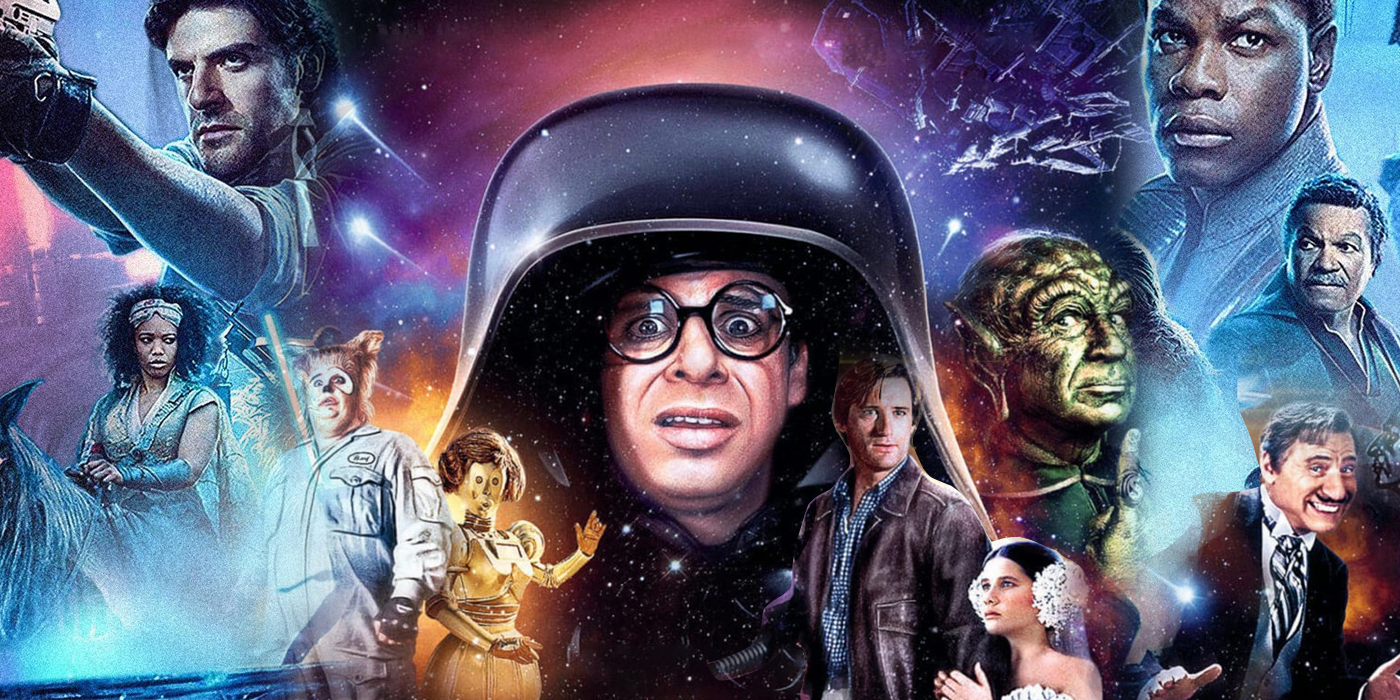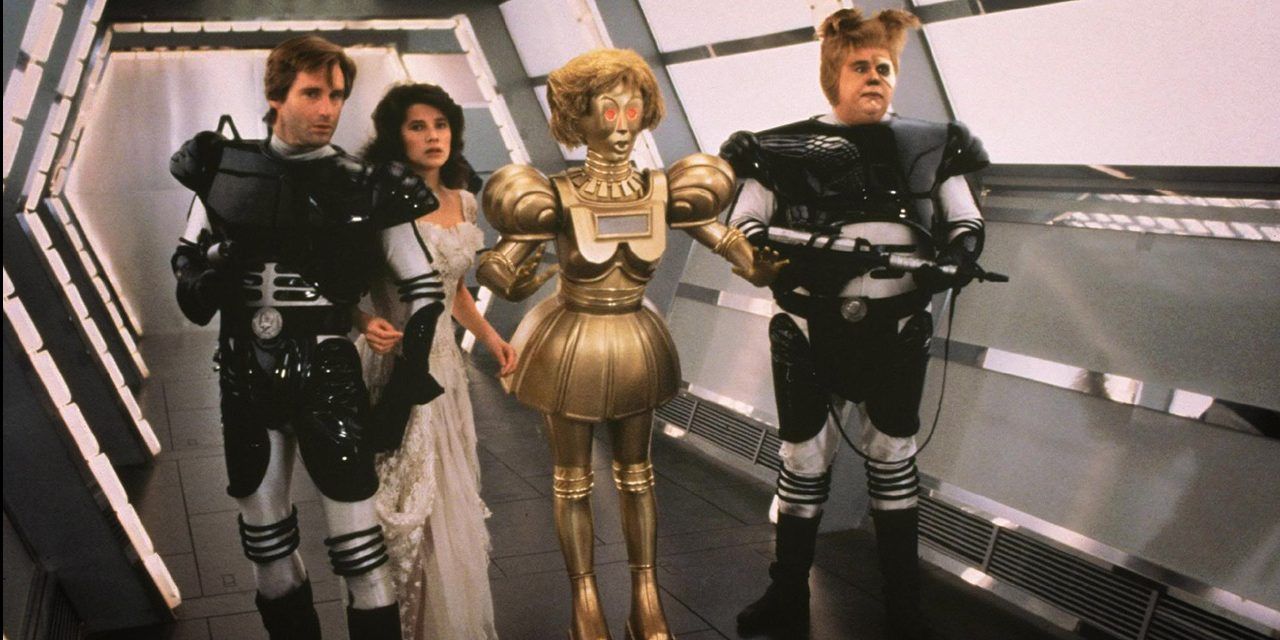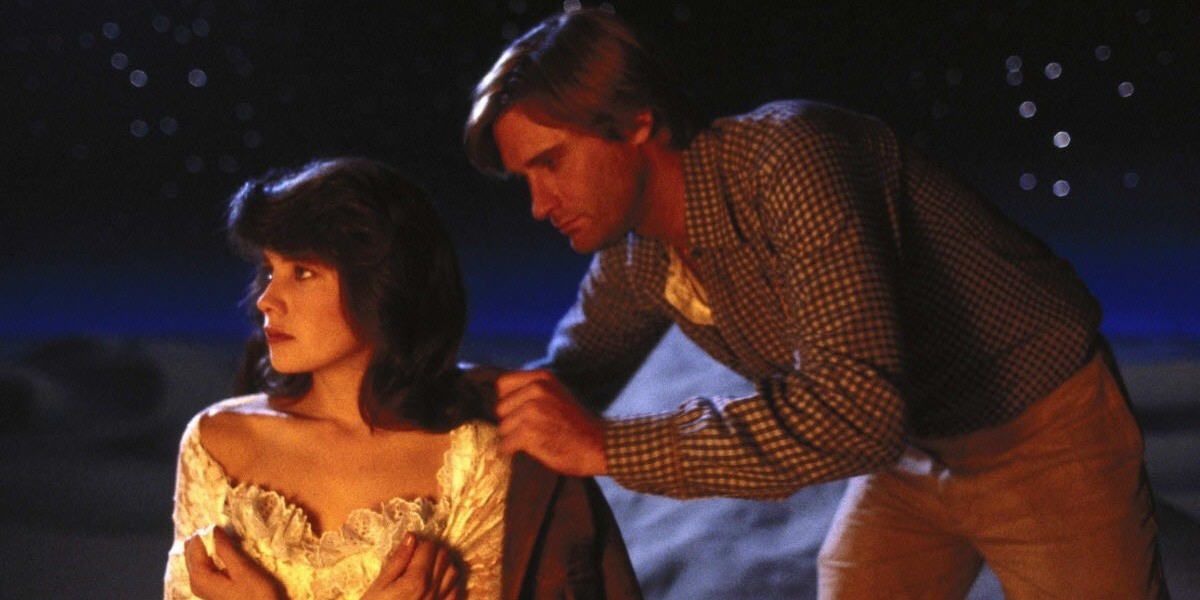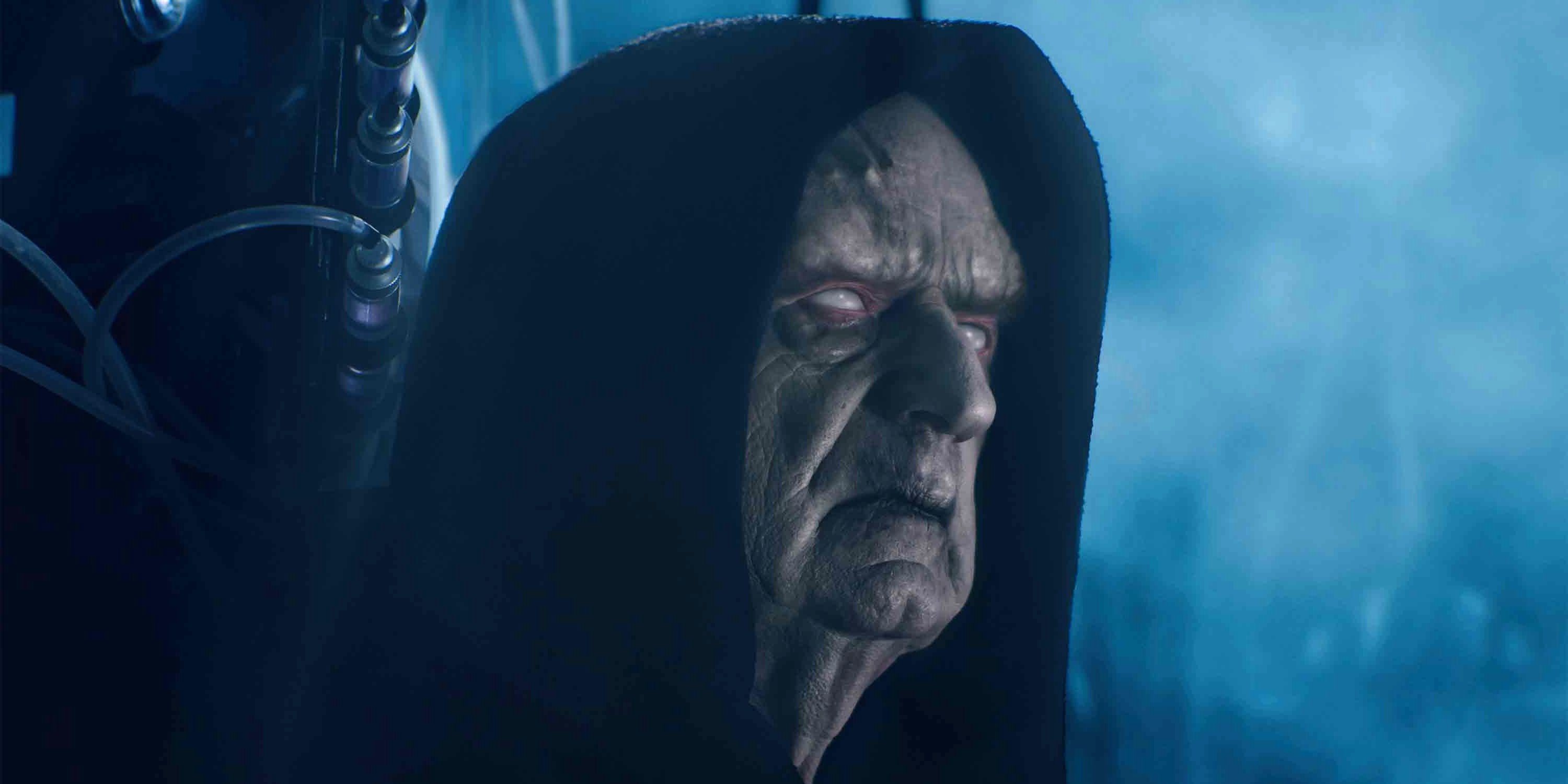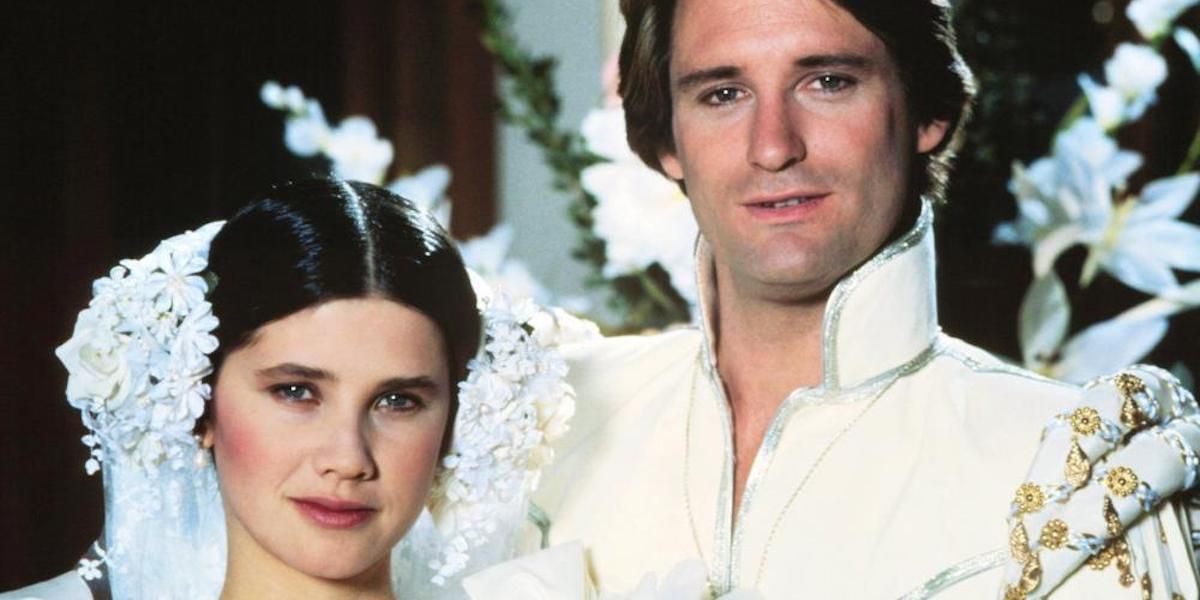“The dead speak!”
From Line One of Star Wars: The Rise of Skywalker, I kinda knew I was in trouble. The Force Awakens did a perfect job throwing us into the joyful kineticism of familiar Star Wars vibes with a bright and bold new cast of characters. The Last Jedi did a perfect job of taking these new characters through bright and bold new arcs and ideas. And in just one line of an exposition-heavy crawl, The Rise of Skywalker staked its desires to throw away all of what was previously built in order to dovetail previous legacies and mythologies in a rushed bit of fan-service and unnecessary course correction. “The dead speak,” three one-syllable words that convey a ton of wildly new (old?) information before rushing onto the new thing, sums up the various flaws with Rise of Skywalker quite cannily.
When I left the screening, I started thinking about another Star Wars-adjacent property that plays with previously established legacies, mythologies, and tropes. And now that this slept on sci-fi-adventure classic has been released in a spiffy 4K Blu-ray from Kino Lorber, I thought it best to discuss why this film is a better Star Wars sequel than The Rise of Skywalker will ever be.
I’m talking, of course, about Mel Brooks’ Spaceballs.
By 1987, the release year of Spaceballs, Brooks had become a king of irreverent, joke-stuffed spoofs that nevertheless honored and loved the movie genres they were lampooning. Blazing Saddles loves westerns; Young Frankenstein loves horror films; Silent Movie loves, well, silent movies. These films will do just about anything for a laugh, but all have solid foundations, character-driven narratives that culminate in satisfying arcs, and genuinely do interesting things with their genres beyond the joke machine pace.
Spaceballs is no exception. It’s more than a competently-written screenplay (credited to Brooks, Ronny Graham, and Thomas Meehan); it’s a screenplay that genuinely cares about its characters, genuinely wants to say something about the culture surrounding Star Wars, and genuinely wants to engage with the ideas of legacy and hero’s journeys so prevalent in Star Wars films before it. Rise of Skywalker opens (and stays stuck) with Rey (Daisy Ridley) trying desperately to find out who she is. Spaceballs opens with Princess Vespa (Daphne Zuniga) literally running away from who she is, escaping a royal wedding with the horrible Prince Valium (Jim J. Bullock) because she yearns for a brighter destiny. In Joseph Campbell’s monomyth/hero’s journey structure, which George Lucas explicitly used in his construction of the original Star Wars trilogy, a hero is called to adventure from their original base of existence, and while they’re reluctant at first (emphasized funnily here by Princess Vespa’s insistence on maintaining a level of wealth and comfort that she’s used to), they eventually desire to seek something new. Rey’s journey here is not to seek something new, it’s to seek something old; a strange, fundamentally inert corruption of what makes these kinds of stories compelling, one that slaps Rian Johnson’s correct insistence that this journey doesn’t actually matter in the face.
Campbell’s monomyth structure ends with our heroes returning to their base reality having changed. In Rise of Skywalker’s ending, we see Rey go not to a home planet, but to Luke Skywalker’s home of Tatooine, so she can say that her last name is actually Skywalker. While I suppose she has emotionally changed (from “I’m sad I don’t know who my family is” to “My family is evil but I’m happy I’ve chosen a new family”), it doesn’t feel like a long, deep, or wide enough journey to have gone on to pop with any level of emotional surprise or depth, especially since the revelation is based explicitly on materials we’ve been familiar with since 1977. But in Spaceballs’ ending, we see Princess Vespa return to the exact same setting as the start — her royal, set-in-stone wedding — with a new partner, Lone Star (Bill Pullman), who’s undergone quite the change himself. Both characters’ changes are emotion-driven (love wins!), philosophy-driven (status is less importance than happiness!), and most importantly, discovered organically within the film’s text, rather than copied and pasted from other materials for an attempt at goodwill through recognition. This is a surprisingly successful, Campbell-utilizing conclusion, given that, again, this is a comedy spoof explicitly using other materials for its gags!
It’s also surprisingly successful given that, on the surface, Lone Star and Rey’s goals are the same: To find out who their family really is. Lone Star wears a talisman around his neck; no wise man has ever told him what it means, but he knows it has something to do with his family. Rey, similarly, has unexplainable powers and psychic links to the Force; no one can tell her exactly what it means, but she knows it has something to do with her family. Spaceballs even predicted a move Johnson would make in The Last Jedi about this legacy issue; as I watched Yogurt (Brooks doing a delightfully Yiddish Yoda) denigrate the so-called “wise men” who couldn’t decode Lone Star’s necklace, insisting that Lone Star’s destiny will be revealed once he writes it, I couldn’t help but think of Actual Yoda (Frank Oz) burning up the old Jedi books in TLJ, denigrating the so-called “wise men,” insisting the characters start writing their own legacy — and teeing up, quite perfectly, the TLJ reveal that Rey’s parents are nobodies.
Except, whoops, no they’re not, because the dead speak, and Rey is actually a Palpatine. In Spaceballs, Lone Star similarly finds out that he’s actually a royal prince. But importantly, this Spaceballs revelation doesn’t come as a direct contradiction of what’s been previously established in its mythology. Lone Star only makes this discovery after he escapes from his own pre-written destiny of “being a reckless, mercenary scoundrel,” refusing the money after rescuing Princess Vespa, choosing morality over profit. It makes for a lovely conclusion to a character-discovered arc, as opposed to the plot-mandated, literally-told-to-Rey-through-no-action-of-her-own discovery moment in Rise of Skywalker. Even the moment of Rey finding the strength to defeat Palpatine and her allegedly “evil destiny” (which, again, feels forced onto the film literally moments before it happens) is motivated by characters of the past insisting that getting in touch with the past is the way to win. Spaceballs is all about characters finding a new future, baby!
Rise of Skywalker is obsessed with connecting dots between its present existence as a new movie and all the past shit we supposedly “love” about Star Wars. It creates a half-baked arc using half-baked footage out of Princess Leia despite Carrie Fisher’s tragic death before production could begin. It sidelines some of its greatest new characters, especially Rose Tico (Kelly Marie Tran), in order to re-focus on familiarity. It jerks tears from its audience by briefly putting beloved characters like Chewbacca or C-3P0 in peril, before just-as-quickly putting them back into the status quo; having its emotional cake without putting in the necessary legwork to eat it, too. It strikes me as a cynically written film, one so afraid of risk it must jam inorganic puzzle pieces together to make its audience feel safe, familiar, comfortable, even though the original 1977 film was itself a ginormous risk its audience was unfamiliar with.
I’ve spoken about how Spaceballs takes more risks than Rise of Skywalker (and I haven’t even mentioned its wild, corporate-satirizing oxygen-sucking plot). But it has a focus on the false comfort of mythology, too — just in a much more incisive way. Rise of Skywalker combs through past Star Wars entries to cobble together its storytelling moves, placating a certain subset of the fanbase who just wants to see things they’re familiar with to feel smart in their pre-existing knowledge being affirmed. How can you take this impulse and blow it out to its most comedically devastating extreme?
By having the characters literally stop the film they’re filming so they can watch the film they’re filming to find clues for how to proceed with the film they’re filming. Brooks has always been a master of gleeful fourth-wall demolishing (see: the final sequence of Blazing Saddles), and Spaceballs is no exception. But in the wake of Rise of Skywalker, the sequence where Dark Helmet (Rick Moranis) and Colonel Sandurz (George Wyner) pop in the VHS of Spaceballs for their next move plays with a startling sense of satirical prescience. Helmet and Sandurz happen upon a logistic, space-time-continuum ripping paradox in their investigation of the film they’ve yet to complete when the tape arrives to “right now” — as in, the moment they are currently in the middle of filming — causing Helmet to fall apart in chaos and confusion. It is deliriously, fiendishly funny, and serves as a cautionary tale to any other screenwriter so hellbent on trawling through the ashes of previous properties without an impulse to create something new; you’ll only find film-breaking logical fallacies!
But Rise of Skywalker never slows down enough to reckon with these fallacies, to investigate how its characters feel on a deep level. Instead it zips from one plot point to the next, shoving enough exposition in our faces to get literally the next thing that’s supposed to happen (without the benefit of Moranis saying “Everybody got that?”) ad infinitum. Spaceballs, despite being a shorter length (96 minutes to TROS' 142), also gives its characters room to breathe, to discover, to feel. There’s a climactic, action-oriented set piece in the film that stops the evil Spaceballs from going through their catastrophic oxygen-sucking plot, sends our most evil characters in exile, and restores the balance of good into the world. But then, the film moves past this logical stopping point, eschewing a sense of traditionally zippy comedy filmmaking rhythm (or heck, even a “good enough for a spoof story” rhythm) to slow things down, get into how Lone Star and Princess Vespa are feeling, and draw a purely emotion-driven conclusion. To put it another way: You’re supposed to show, not tell, in storytelling. Rise of Skywalker tells us everything; Spaceballs has the courage to stop and show the roses.
From start to finish and everything in between, Spaceballs is a triumph of filmmaking and storytelling over The Rise of Skywalker. I would much rather purchase a Spaceballs flamethrower than a Skywalker lightsaber, and I am much more invested in the fates of Lone Star and Vespa than Rey and Kylo Ren. The dead may speak for J.J. Abrams, but for Mel Brooks, there’s still new life to be found in the galaxy.

